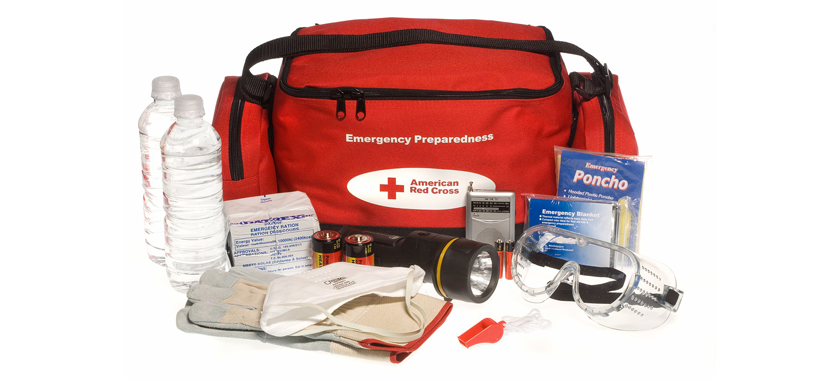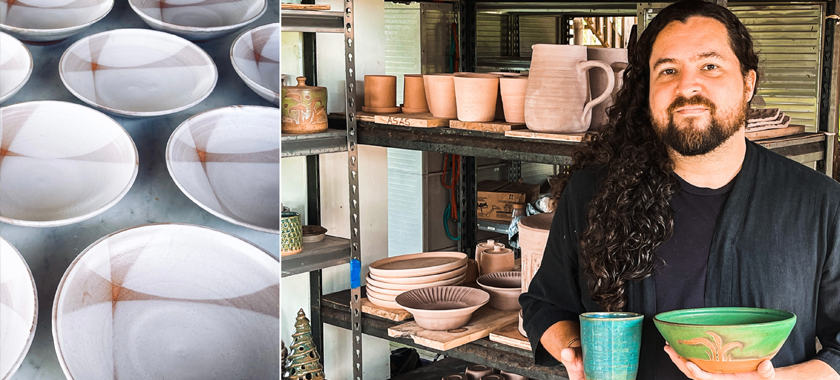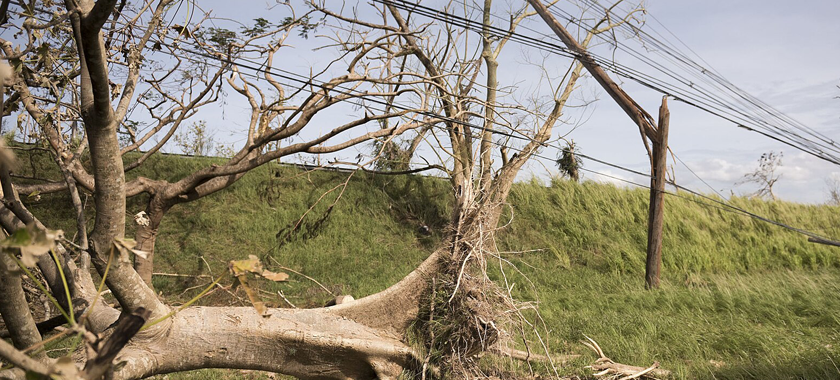
Emergency Preparedness: A 4-Step Action Plan
NYFA, Craft Emergency Relief Fund (CEFF+), and National Coalition for Arts Preparedness and Emergency Response (NCAPER) join forces to help you protect yourself and your assets before an emergency.
The COVID-19 pandemic, along with other emergencies including severe storms, drought, wildfire, and theft, required all of us to change how we work and communicate. That makes preparedness more important now than ever before for artists to protect their practice.
But what exactly is preparedness? It’s taking steps now to help protect yourself and your assets before an emergency, so you’re more resilient and able to bounce back quickly. Artists in all disciplines have assets to be protected!
What You’ll Need
You’ll need: a computer, laptop or tablet. If you’d prefer low-tech, grab paper, pens, or markers. Grab your studio mates or artist friends to do it with you. The more minds, the better!
Step 1: Listing Your Assets
Think through all of the things that allow you to carry out your artistic practice. These can include:
- Physical space. Home, if you work out of it; studio; rehearsal space; theatre; gallery/sales space; office space; storage areas.
- Physical items. Inventory, supplies, computers, equipment/gear, sets, props, cameras, manuscripts, fixtures, instruments, recordings/archives, paper and digital records, including contracts/vendor/customer contacts.
- Events. Sales, festivals, performances, rehearsals, classes, workshops, tours, fundraisers.
- Relationships. Company members, students, agents/managers, artistic associates/assistants customers/collectors/gallerists, presenters, venue managers, audiences, donors.
What can you least afford to lose? Make a list of things related to your practice/studio and career that you can least afford to lose. This might include:
- Your purchased or handed-down tools
- Computer/hard drive, computer passwords
- Original works/manuscripts/scores, work samples, or documentation
- One-of-a-kind objects/props/costumes
- Mailing list
Protecting your legacy and career is another important kind of planning! Learn more with these Artist Career Resources.

Step 2: Assess Your Risks
While it is ideal to prepared for any type of emergency (known as all-hazards planning), start by considering the types of risks and potential effects that are most likely to occur depending on where you live and work.
These might include strong winds from hurricanes and tornadoes, flooding, lightning, drought, fire, blackouts, terrorism/acts of violence, theft/vandalism, or cyberhacks. Think about not only your own space/materials, but how, for example, a bad storm could impact your ability to sell your work/get to a gig/hold class?
Consider less obvious things like an injury or illness, or the need to take care of a family member.
Help protect your health and prevent injuries with CERF+’s Self Care for Artists.
Step Three: Protect Your Assets and Minimize Risks
Brainstorm ways you could protect or minimize the list made in Step One with the risks you identified in Step Two.
For example, if you cannot afford to lose your archive or digital documentation, you might invest in cloud storage or transfer your data to a hard drive that is stored at a safe off-site location. Make duplicates of critical paper and digital records and store these in a similar manner.
The Studio Protector is a free, online studio safety guide with more information on preparing for disasters and preventing emergencies.
Other mitigation actions:
- Store what is most important in the most protective way possible: off the floor (not in an attic or basement) away from windows, in airtight containers/acid-free storage, or in a fireproof safe.
- Buy the right insurance plans for your needs, and remember that homeowners insurance won’t cover business losses! Look into business, flood, homeowners/renters, and other insurance policies.
Visit CERF+’s Insurance Hub for artist-focused insurance information.
- Make sure your contracts and agreements—oral and written—provide for the event of a disaster and you understand what will happen in that event: rescheduling, getting paid, not having to return pre-payments, compensation for loss/damage to work.
- Understand Force Majeure (Acts of God) clauses.
- Charge phones, computers, etc. and have portable chargers fully charged. Have LED lights throughout spaces, plus portable LED lights.

Step Four: Create Your Emergency Plan
You may need to quickly evacuate, or you may need to shelter in place. Either way you want to decide ahead of time what steps you’ll take, what items you need, and how you’ll communicate with important people.
NYFA maintains a list of emergency resources for artists in all disciplines, across the country.
If there’s a major weather event, industrial accident, or civil unrest, you may need to shelter in place. To determine what you need to purchase and do to shelter in place, refer to ready.gov. Also create a vital contacts list, and gather and package vital documents in more than one place (hard-copy and stored online).
When/if you’ll evacuate, you may have to leave immediately to get to a safe space; or you may have some warning time. With some notice, what will you do to prep/secure your space and assets? Include turning off electronics and utilities, if necessary. Where will you go?
And who do you need to notify about where you’ll be and what you’re doing, and any cancelled events? Have a contact list ready of family, friends, company members/staff, colleagues, and places where you would have been showing/performing/teaching, etc.
If you do experience a disaster, NCAPER offers an Arts Field Guide to Federal Disaster Relief to guide you through opportunities for assistance.
Create an emergency “Go Kit” to grab on your way out. Remember, you may or may not have power, phone, or online access. Contents to consider include:
- Full list of important contacts, laminated/in protective covering, as well as a copy online.
- Include the names/address/phone number for family members, friends you need to reach, colleagues (venues, galleries, co-creators, company/ensemble members), staff, places of work, managers of facilities/storage spaces, insurance agents; doctors/healthcare providers, attorneys, accountants, managers/agents, FEMA numbers, emergency centers—and anyone else you may need to reach in a crisis.
- Include copies of insurance policies, corporate information/EIN, etc.
- In addition to your vital documents package: cash, credit cards, medications, most precious art practice assets you can take and that will be safe where you’re going, clothing, toiletries, cellphone and battery power, computer, and portable hard drive.
The Craft Emergency Relief Fund (CERF+) serves craft artists across the United States and territories by
providing education programs, advocacy, network building, and emergency relief. Our online resources
are relevant to all artists and are free and open to everyone.
NCAPER, the National Coalition for Arts Preparedness and Emergency Response, is a voluntary task force
of national, regional, state, and local arts organizations, public agencies, and foundations. The Coalition
helps ensure that artists, arts/cultural organizations, cultural funders, and arts businesses have the
capacity and ability to respond effectively to disasters and emergencies affecting the arts and culture
sector.
New York Foundation for the Arts (NYFA) provides artists, emerging arts organizations, arts
administrators, and students with critical support, professional development tools, and resources for
defining and achieving career success.